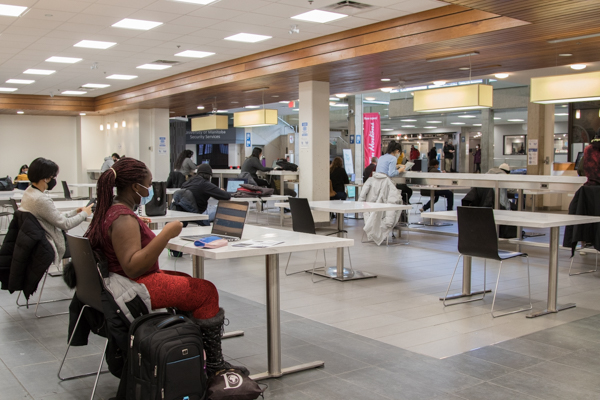The University of Manitoba commenced a partial return of in-person classes on campus Feb. 28.
Just over 2,200 course sections have returned to in-person learning, a major increase from the 450 course sections on campus prior to reading week.
Diane Hiebert-Murphy, provost and vice-president (academic) at the U of M, offered assurance that “a number of […] safety protocols” will be maintained to ensure a safe return.
“That will mean that we will have KN95 masks available to everyone coming onto campus,” Hiebert-Murphy said.
“They [will] be available for pick up in a variety of areas and they will be replenished as needed over the course of the remaining part of the term.”
While more courses are returning in person, many will continue to be offered remotely.
“What we did was we asked all of our teams to work with their teams and to look at their programs and their courses and make some determinations about what courses need to come back in person to really help achieve the learning objectives of those courses and programs,” Hiebert-Murphy said.
“Those courses that are coming back are courses where things can be done in person that can’t be achieved in the same way if they continue remote.”
Many of the courses returning to the in-person environment are courses that require hands-on learning methods. Courses that have labs have been prioritized in the partial return to campus.
KN95 masks are also now required on campus.
“We’ve decided that we would upgrade the mask requirements in light of the fact that there will not necessarily be social distancing in every circumstance,” Hiebert-Murphy said.
One thing missing from the health and safety update is a physical distancing requirement. Since there will be in-person classes with close to or more than 100 in the classroom, there would not be enough space to accommodate class sizes that large while maintaining a social distancing requirement.
“Social distancing is not one of the things that we can offer just given the number of students that will be coming back and the spaces that we have available,” said Hiebert-Murphy.
While not all classes returned to campus Feb. 28, a full return is currently planned for the summer term.
“As always, we’ll be guided by public health advice and prioritize the health and safety of our faculty, students and staff and make the best decision that we can as we get closer to summer term,” said Hiebert-Murphy.
“We’ll obviously be watching what happens at our university over the next few weeks as well as what happens across the post- secondary sector.”
For students scheduled to return to campus after reading week who do not feel comfortable returning to an in-person environment, there is still the option to opt out of courses without academic or financial penalty.
Hiebert-Murphy noted that, for some students, this return to classes may be their first time on campus.
“We have developed a number of supports and information desks. There are campus tours. There’s a lot of activities that have been put in place to help integrate students onto campus,” she said.
Hiebert-Murphy also encouraged students to go to the university’s COVID-19 website to find resources to help with the transition from remote to in-person learning and to connect to their faculties for support.
Additionally, students can reach out to the counselling resources available on campus if they are feeling anxious about the transition.


